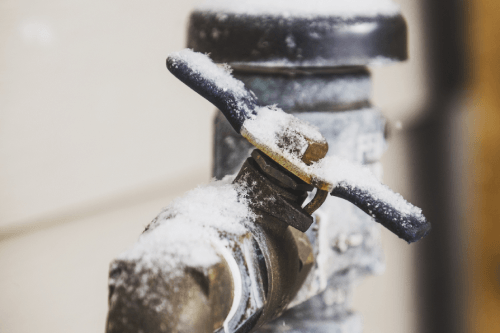How to Safeguard Your Pipes from Freezing: Expert Guidance
How to Safeguard Your Pipes from Freezing: Expert Guidance
Blog Article
We have encountered the article on How to Prevent Your Pipes From Freezing listed below on the net and decided it made sense to write about it with you in this article.

Winter can ruin your plumbing, specifically by freezing pipes. Right here's just how to stop it from occurring and what to do if it does.
Intro
As temperature levels decrease, the risk of frozen pipelines rises, possibly resulting in costly repair work and water damages. Understanding just how to stop frozen pipelines is important for house owners in chilly climates.
Recognizing Frozen Pipes
What causes pipes to freeze?
Pipelines ice up when revealed to temperature levels listed below 32 ° F (0 ° C) for extended periods. As water inside the pipes ices up, it broadens, taxing the pipeline wall surfaces and potentially triggering them to burst.
Risks and problems
Icy pipelines can lead to supply of water disruptions, residential or commercial property damages, and costly fixings. Burst pipes can flooding homes and cause substantial architectural damage.
Signs of Frozen Pipeline
Recognizing icy pipes early can prevent them from breaking.
How to identify frozen pipes
Try to find decreased water circulation from faucets, unusual smells or noises from pipes, and noticeable frost on exposed pipelines.
Prevention Tips
Shielding prone pipes
Wrap pipes in insulation sleeves or make use of warm tape to secure them from freezing temperature levels. Focus on pipelines in unheated or outside locations of the home.
Heating strategies
Keep indoor spaces adequately warmed, especially areas with plumbing. Open closet doors to permit cozy air to circulate around pipes under sinks.
Safeguarding Exterior Plumbing
Garden pipes and outdoor taps
Disconnect and drain pipes garden pipes before winter months. Mount frost-proof faucets or cover outdoor faucets with protected caps.
What to Do If Your Pipes Freeze
Immediate activities to take
If you presume frozen pipes, maintain taps open up to soothe stress as the ice thaws. Use a hairdryer or towels taken in warm water to thaw pipelines slowly.
Long-Term Solutions
Structural modifications
Think about rerouting pipes away from exterior walls or unheated locations. Add extra insulation to attics, cellars, and crawl spaces.
Updating insulation
Purchase high-grade insulation for pipelines, attics, and wall surfaces. Appropriate insulation helps maintain consistent temperature levels and decreases the threat of icy pipes.
Verdict
Protecting against frozen pipelines calls for proactive measures and fast reactions. By understanding the reasons, indicators, and preventive measures, homeowners can shield their pipes throughout winter.
6 Proven Ways to Prevent Frozen Pipes and Protect Your Home
Disconnect and Drain Garden Hoses
Before winter arrives, start by disconnecting your garden hoses and draining any remaining water. Close the shut-off valves that supply outdoor hose bibs and leave the outdoor faucet open to allow any residual water to drain. For extra protection, consider using faucet covers throughout the colder months. It’s also important to drain water from any sprinkler supply lines following the manufacturer’s directions.
Insulate Exposed Pipes
Insulating your pipes is an effective way to prevent freezing. Pipe insulation is readily available at home improvement stores and is relatively inexpensive. Pay close attention to pipes in unheated areas such as the attic, basement, crawl spaces, or garage. Apply foam insulation generously to create a buffer against the cold. You can also wrap your pipes in heat tape or thermostat-controlled heat cables for added warmth.
Seal Air Leaks
Inspect your home for any cracks or openings that could let in cold air. Seal any holes around the piping in interior or exterior walls, as well as the sill plates where your home rests on its foundation. Additionally, make sure to keep your garage door closed unless you’re entering or exiting. Leaving it open creates a significant air leak that can lead to frozen pipes.
Allow Warm Air Circulation
During cold snaps, it’s essential to allow warm air to circulate evenly throughout your home. Leave interior doors ajar to promote better airflow. Open kitchen and bathroom cabinets to help distribute heat consistently around the rooms. If you have small children or pets, be sure to remove any household chemicals or potentially harmful cleaners from open cabinets for safety.
Let Faucets Drip
A small trickle of water can make a big difference in preventing ice formation inside your pipes. When temperatures drop significantly, start a drip of water from all faucets served by exposed pipes. This continuous flow helps prevent the water from freezing. Additionally, running a few faucets slightly can relieve pressure inside the pipes, reducing the chances of a rupture if the water inside does freeze.
https://choateshvac.com/6-proven-ways-to-prevent-frozen-pipes-and-protect-your-home/

I hope you liked our part about How to prepare your home plumbing for winter weather. Thank you so much for taking the time to read through our piece. Those who enjoyed our blog post please do not forget to pass it around. I recognize the value of reading our article about How to prepare your home plumbing for winter weather.
Get A Quote Report this page